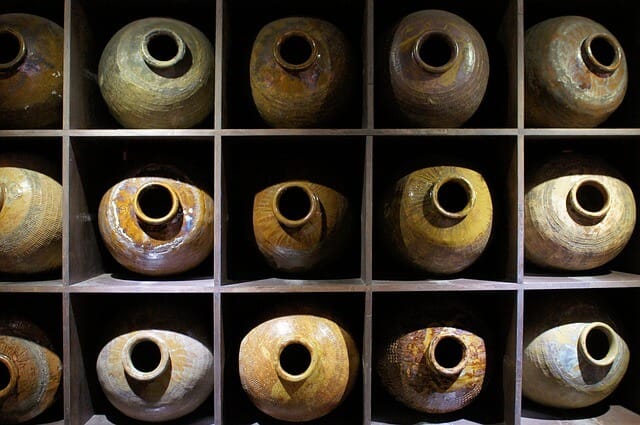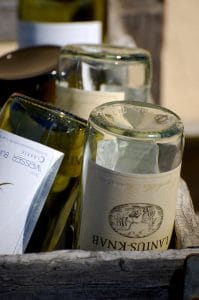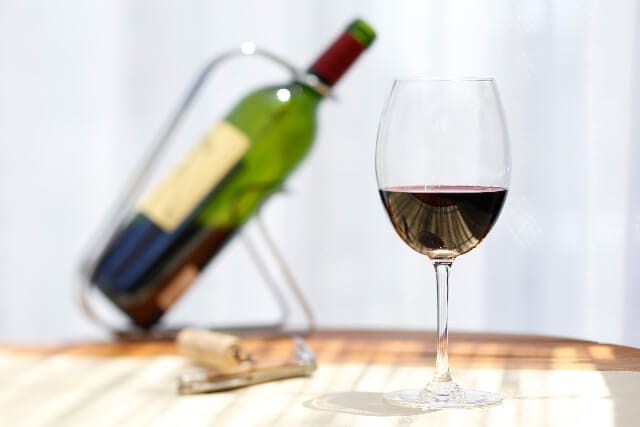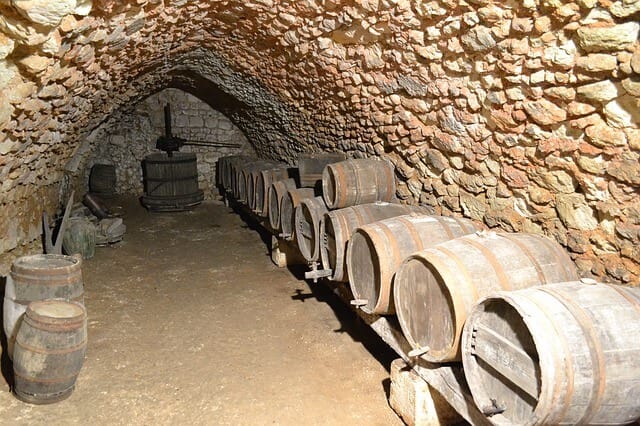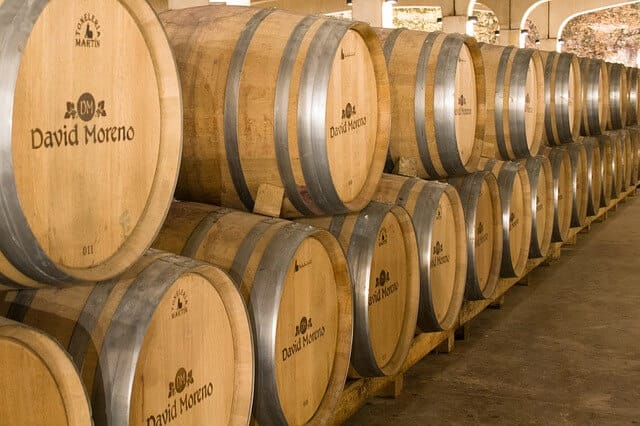
Wine enriches the diet, creates encounters with people, and satisfies intellectual curiosity. If you are familiar with wine, you know that.
But if you don't know much about wine, you'll be courageous to enter the wine world.
This time, I would like to solve seven wine questions for those who have never had contact with wine. I would be happy if you could touch the charm of wine through this article.
Simple questions about wine ①: What is wine in the first place?
"Brewed wine made from fermented grape fruits"
I think this is the best word to explain wine. Brew is a liquor made from sugar and starch and fermented with alcohol by working with yeast. Beer and sake are also brewers. However, since beer and sake are made from grains, there is a big difference in taste and flavor from wines made from fruits even in the same brew.
Grapefruit, the raw material of wine, contains a lot of sugar, water and yeast that can be fermented as it is, so there is no need for saccharification or hydration of starch, which is often used when making brewed sake. In addition, since there is no distillation process, the nature and taste of the ingredients themselves are well reflected in the wine.
For the above reasons, wine enthusiasts enjoy a lot of fun because the same wine has a great difference in taste and aroma depending on the ingredients.
There are several types of wine, and the red, white and rose wines that are familiar to us are called “still wines”. In addition, “sparkling wine” that dissolves carbon dioxide in the brewing process, “fortified wine (wine fortified wine)” that has been preserved by adding alcohol, and medicinal herbs are added to add a unique flavor. There is "flavored wine".
A simple question about wine ②: Why are the colors of red, white and rose the same?

As I wrote earlier, red wine, white wine, and rose wine are classified as "Still Wine". Have you ever wondered why red and white wines have different colors? There are two reasons why wine colors are different:
● Because the grape varieties are different
Grapes used to make wine include black grapes and white grapes. Colors are produced by the pigments contained in the peel being transferred to the juice. Black grapes, in particular, have different shades depending on the varieties, and are characterized by easy color changes.
● Because the way of making is different
The second reason is due to the difference in the brewing method. Red wine is darker because it crushes the skin and seeds of black grapes. White wine, on the other hand, has a pale color because it removes the skin and seeds of white grapes and ferments only the juice. Rose wine is black grapes only, with a combination of black grapes and white grapes.
■ Simple questions about wine ③: What kind of grapes are used in wine?
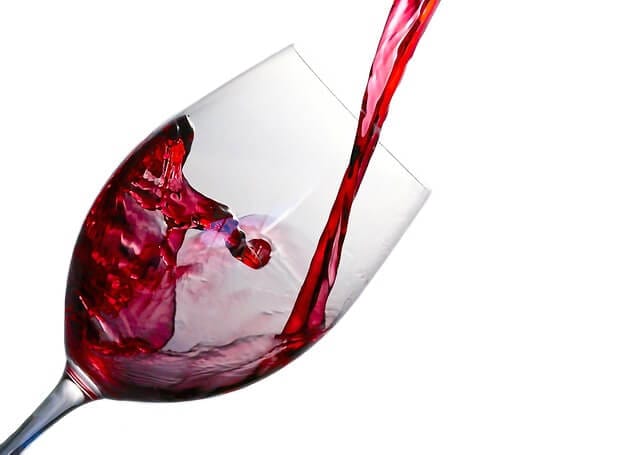
What is wine in the first place? I introduced that wine has a great difference in taste and aroma depending on the ingredients. Here, I would like to explain what kind of grapes are used in wine.
How many grapes do you think are used in wine? There are about 100 answers for the main varieties alone. Including minor varieties, the number is immeasurable. You can enjoy a wide variety of wines with different varieties because it affects the aroma, taste, taste and depth of the wine.
I can't remember all the varieties just because I like wine, so here are six major varieties.
● Cabernet Sauvignon (red wine)
Cabernet Sauvignon, native to the Bordeaux region of France, is a typical grape variety of red wine. Many people have heard of their names.
Cabernet Sauvignon, also known as the “King of Black Grapes”, is the most famous grape for red wine. It has a strong astringency and fruity taste, and you can enjoy a long finish in your mouth. By aging, the tannin's astringency and sourness balance will become a deep flavor. There are many fragrances such as ink, Himalayan cedar, cassis and pepper.
Even if the brand is the same, the brand has a different taste and aroma depending on the place of production, so you may want to enjoy the difference in the place of production!
● Merlot (red wine)
Merlot is a varieties with an attractive smoothness, also called “velvety touch”. The fruit is large and the skin is thin.
A fine, mellow taste. It has a scent like plum or dark cherry, and when ripened it becomes a scent like humus or mushroom. Because it grows in cool and high-temperature climates, it is cultivated widely all over the world so that it always competes for the first place in the cultivation area.
Pinot Noir
The biggest attraction of Pinot Noir is the “bundant fragrance that gently and intricately overlaps”. It has little tannin and strong acidity, but because of its rich fruit, it has a mild and easy-to-drink impression. Mineral nuances are characteristic of fruity scents such as strawberries and cherries. Because the grape fruit is thin and delicate, it is said that it is weak against mold and difficult to grow. Keep in mind that this is a variety that is sensitive to slight changes in the climate, is sensitive to taste, and has a strong chance of being lost.
● Chardonnay (white wine)
Chardonnay is the most popular variety among white grapes. It can be enjoyed in various flavors depending on the climate and soil, and is cultivated all over the world. In cool regions, it has a fresh taste like green apple or lime, and in warm regions, it has a rich taste like tropical fruit. It is one of the early varieties that are strong against diseases and molds and can be harvested before the autumn cold comes.
● Sauvignon Blanc (white grapes)
The characteristic of Sauvignon Blanc is that you can enjoy the nuances of herbs in the scent of citrus fruits such as lime and lemon. It has a fresh, sour taste and increases the fruitiness when the grapes mature. The color is transparent greenish yellow, but when it ages, it becomes dark yellow and you can enjoy the finish in your mouth.
As the second most important white grape varieties to Chardonnay, it is a cultivar loved around the world.
● Riesling (white wine)
Riesling is a varieties characterized by an incomparable taste that balances the sweet aroma reminiscent of honey and rings and the pure acidity. In Germany, it is often used for sweet wine, and the higher the sugar content, the higher the quality. In France, it is used for sharp dry wine, and new fans are increasing.
It is a variety that can withstand long-term aging, and is expected to exhibit higher potential in the future.
■ Simple questions about wine (4): What determines the taste of wine?

The taste of wine is determined by five factors: acidity, sweetness, astringency, fruitiness, and alcohol. The total size of the elements combined is called the “body”. If the overall size is large, it is called “full body”. If it is medium, it is called “medium body”. .
The factors that determine individuality differ between red wine and white wine. In the case of red wine, the astringency derived from tannins greatly affects the taste. On the other hand, in the case of white wine, since there is little tannin, astringency is not felt so much, sourness and sweetness are decisive factors.
Let's quickly check the basic elements of the taste of wine.
● Basic taste elements
The following is a brief description of the five factors that determine the taste of wine.
·acidity
Both red wine and white wine are important elements that express individuality. Even with the same acidity, there are differences in texture such as sharpness and mellowness.
·sweet taste
There are two types of sweetness: sweetness from grape sugar and sweetness from alcohol. There is straight sweetness like sweet wine, and there is also a faint sweetness felt with dry wine.
·astringency
Derived from tannins discharged from the skin and seeds. The astringency is particularly pronounced with red wine, and the tannin changes gently as it ages.
・ Fruit
The fruity taste is fruity and condensable. If the fruit is rich and condensed, the body will become thicker.
・ Alcohol level
Alcohol content becomes a taste skeleton. The higher the frequency, the stronger the skeleton and the richness and sweetness.
■ Simple questions about wine ⑤: How many wine aromas are there?

The scent of wine is an indispensable element to know the characteristics and maturity of wine and to enhance its taste. The scent of wine is also called “aroma”, and the “first aroma”, where the original scent of grapes appears in wine, is a particularly easy-to-understand scent.
There are more than 100 wine aromas, including fruits, plants, flowers and animals. Some of the scents feel comfortable when tasting, while others feel unsatisfactory.
You don't have to remember everything, but just knowing the fragrance variations makes it easier to understand the personality of wine.
Here, I would like to introduce six basic categories to know the fragrance of over 100 types of wine, red wine and white wine.
▲ Types of red wine aroma
The following 6 categories are the basic categories of red wine aroma.
● Fruit (cassis, blancboise)
Red wine has a lot of berry scents such as cassis, blancboise, and strawberries.
● Plants (forest undergrowth, mushrooms)
The scent of grass and vegetables is often expressed in youthful red wine, and the scent of dead leaves can be felt by aging. In addition, red wine that has been aged in the bottle spreads the scent of the soil like a mushroom.
● Flower system (rose, violet)
The younger red wine has a gorgeous fragrance such as roses and violets. When red wine with a strong floral scent is aged, it changes from a fresh scent to a scent like dried flowers or potpourri.
● Animal (tanned skin, gibier)
Long-term aging of Burgundy and Bordeaux red wines will give you a unique scent. The tanned leather has an elegant scent compared to the wild scented gibier.
● Toast (coffee, caramel)
By aging in wooden barrels, the fruit aroma from grapes and the fragrant aroma of barrels fuse. Grapes cultivated in temperate areas will have a coffee-like scent, and a long aging period in the barrel will have a caramel-like scent.
▲ Types of white wine aroma
The following six categories are the basic categories of white wine aromas.
● Fruit (lemon, peach)
The young white wine has a citrus scent like lemon and lime. In the case of white wine, the more ripe the grapes, the more fragrant the fruity scent is like peach.
● Plant (herb, vanilla)
In the case of white wine made in a cool production area, a fresh and bluish scent like herbs and mint is often felt. Moreover, when aging inside the barrel, it changes to a sweet and plump fragrance.
● Flower (Acacia, Honey)
When expressing the aroma of white wine, the slight sweetness and floral aroma are often used. The white wines that Riesling introduced earlier often contain white flower nuances such as acacia.
● Animal (musk, butter)
In precious and sweet wines, the scent of musk is unique. Some long-term white wines that have undergone lactic acid fermentation and barrel aging have a buttery fragrance. These are fragrances that are unlikely to be felt with red wine.
● Mineral (mineral, petroleum)
Some white wines with a strong mineral scent have a scent of minerals and the ocean-like tide. There are also grapes with a characteristic oily scent like oil, such as Riesling.
● Toast (almond, caramel)
The barrel-aged white wine may give off a smoky scent like almond or smoked. In addition, it is said that a sweet scent like caramel is likely to appear from white wine aged in bottles.
■ Simple questions about wine ⑥ : Wine has always been?

Wines familiar to our lives such as supermarkets and convenience stores. Since when has wine been available?
The origin of wine, more than 8000 years ago, it is said to be an area around the Caucasus Mountains in present-day Georgia. Many excavated items related to brewing have been found in the ruins at that time, and it is clear that wine has been popular since ancient times.
It was from the end of the Edo period to the Meiji period that wine spread in earnest in Japan. Although it was difficult to accept at the beginning, it quickly spread with the advent of production by the government and the emergence of sweet wines tailored to Japanese taste.
Toshimichi Okubo was behind the government's promotion of wine production. When Tokutsu Okubo visited France, he was impressed with the culture of enjoying wine casually. After returning to Japan, Western wine seedlings were introduced from Europe and the United States for Japanese crafts. It is no exaggeration to say that it is thanks to Toshimichi Okubo that wine is so popular in Japan.
■ Simple questions about wine ⑦: Where is wine made?

Grapes that are indispensable for wine are fresh fruits, so the place where grapes grow naturally is the place where wine grows. The average annual temperature is said to be 10 to 20 ° C, which is suitable for viticulture. If you look on the map, it will be in the region of north latitude 30 to 50 ° and south latitude 20 to 40 °. In the wine industry, this region is called the “wine belt”, indicating that wine is a prosperous region.
▲ Pay attention to emerging wine countries!
Where is most of the wine? If you ask me, I will give you a list of European countries. Actually in the wine production ranking,
1st place Italy, 2nd place France, 3rd place Spain
Europe, which has a long history of winemaking, is ranked high.
On the other hand, looking at Japan's imported wine ranking,
1st place Chile, 2nd place France, 3rd place Italy
And Chile, not Europe, is in first place.
In recent years, wines made by emerging countries such as Chile and Argentina are attracting attention. Wines made in Chile and Argentina boast the highest level of cost performance in the cultivation that takes advantage of the rich soil and topography. Popular with people who want cheap and high quality wines, Japan imports the most Chilean wines.
A wine with a strong European image, but keep an eye on wines made in emerging countries such as Chile, Argentina and South Africa.
■ Summary
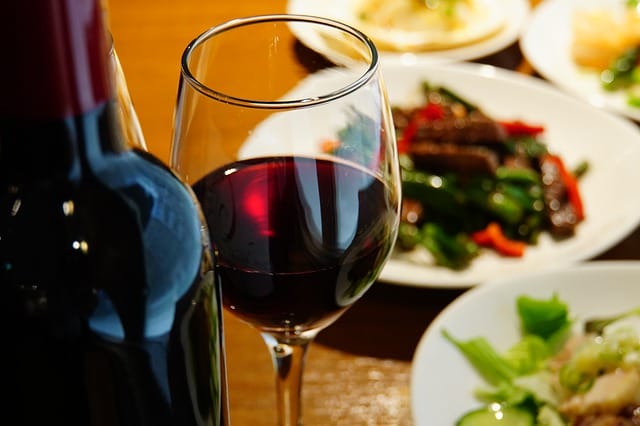
This time, we have solved seven simple questions about wine for beginners.
As I mentioned at the beginning, wine enriches the diet and gives us a lot of fun. If you haven't felt the charm of wine yet, please jump into the world of wine!


